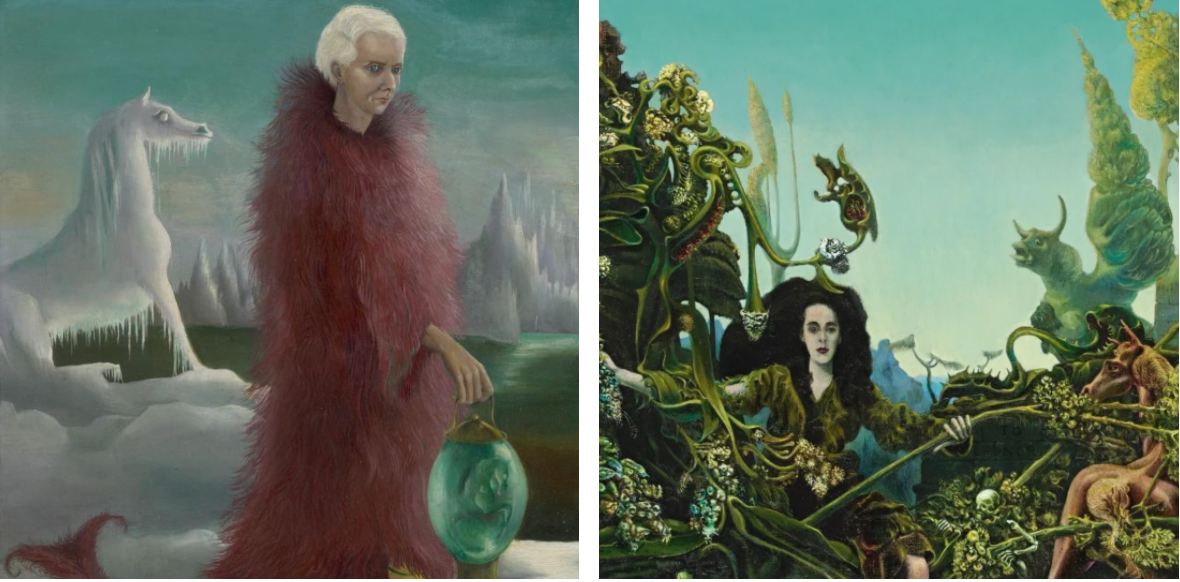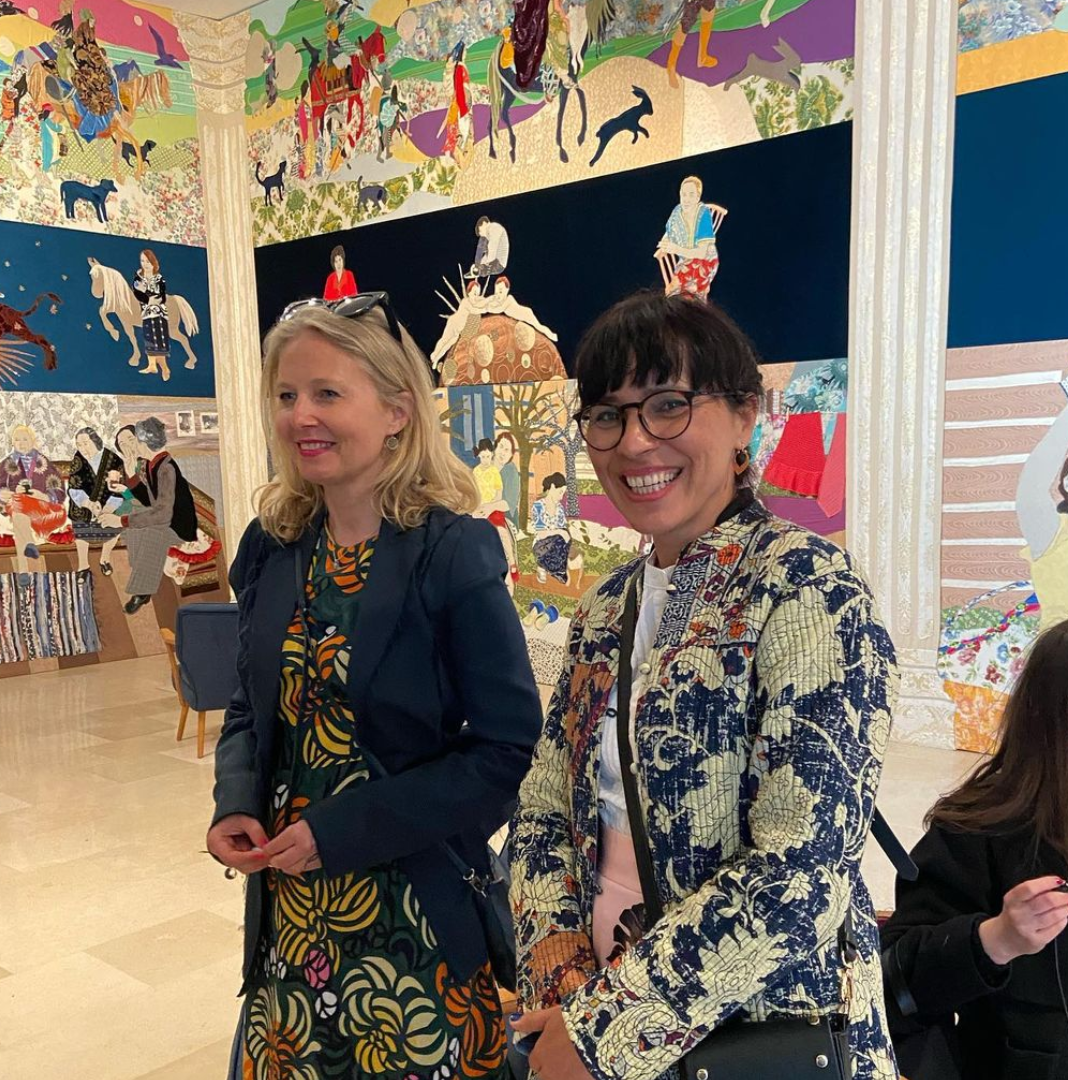The Milk of Dreams
The Milk of Dreams

Among cultural bans, Covid, and a very prominent national pavilion standing empty, the Venice Biennale is opening this week! Conceived by the first Italian (!) curator Cecilia Alemani who made sure, comme il faut, an overwhelming majority of the 213 artists exhibiting are female or gender non-conforming.
“The exhibition borrows its title from The Milk of Dreams, a pivotal book written by the British-born Mexican surrealist Leonora Carrington.” Well, pivotal might be a stretch; it is a surrealist children’s book, quirky, dark, and funny, and mentions poop a lot. Leonora Carrington escaped patriarchal structures at least twice in her life. First, she ran off to Paris as a 19-year-old art student with 25 years her senior Max Ernst ( debatable “escape”), who “taught her everything.” But then promptly dumped her when World War II developments had him arrested twice and in need to be rescued himself by American collector ( of “art and men”) Peggy Guggenheim, who he later (briefly) married. Fun Fact: Peggy Guggenheim’s named her first autobiography “Of This Century” after her groundbreaking, albeit short-lived New York Gallery “Art of this Century.” A direct dig at her uncle’s Solomon Guggenheim So-Last-Century Modern Art collection, who has snubbed her work and collection all her life. and trust me the feelings were mutual. The book portrays her adventures in Europe and New York and a socially acceptable selection of her supposedly 1000+ lovers, using no real names but aliases. In her second book, older, 0 Fucks Peggy attempted a TELL ALL autobiography using all the REAL NAMES. Becket, Brancusi, Tanguy, you name it. Do I need to go on? The book received heinous “reviews,” got censored and banned, and is almost nowhere to be found, even today. No, she didn’t name it Milk of Dreams; she called it “Ich habe alles gelebt.”
Peggy’s bed ( with a headboard made by Calder) was later removed from her Venice Pallazzo (conceived to be a lived-in museum) by the foundation-appointed curator Fred Licht to avoid the visitors’ crass comments about her love life. They kept the Calder though. Despite her lifelong battle for innovation and against family traditions, Peggy could ultimately not secure the future of her collection in any other way but by entrusting it to her uncle’s established foundation. In 1986, seven years after her death, the Solomon R. Guggenheim Foundation purchased the US Pavilion from the Museum of Modern Art, New York, with funds provided by the Peggy Guggenheim Collection Advisory Board. Will you look at that? Everything in this beautiful art market is interconnected.
Peggy’s ashes are buried with her beloved ( and numerous!) dogs in the palazzo garden.

The second time Leonora Carrington had to escape patriarchy was post her Ernst-induced nervous breakdown when she was committed to an asylum and almost got pawned off to South Africa for “treatment” (electrotherapy was a thing then) by her family. She describes her mental health journey in her book “Down Below”. She managed to escape by taking a taxi to the Mexican embassy and marrying a rando diplomat she had met at some party in Paris. Briefly reunited with Ernst in New York, before Leonora left for Mexico, where she remarried and had a long, for the most part unrecognized, career, the two artists exchanged portraits of each other ( where she painted him as an older Peggy Guggenheim). True to the art market form, her works were “discovered” a few years before her death in 2011, living on an estate worth millions. The Milk of Dreams was published in English in 2017.

Both Carrington and Ernst will be featured in the joint show ‘Surrealism and Magic: Enchanted Modernity’ organised by the Peggy Guggenheim Venice collection teaming up with the Museum Barberini. A slew of parallel foundation funded mega shows in the years theme of strong female lead: Mary Weatherford at Museo di Palazzo Grimani. Her “powerful” exhibition ‘The Flaying of Marsyas’ reflects on her conversation with the Italian Renaissance painter Titian’s titular masterpiece of 1570 – 76. Marlene Dumas retrospective of 100 paintings and drawings, on view at the Palazzo Grassi.
Lita Albuquerque: Liquid Light organized by bardoLA, and of course, a lot of us are looking forward for the Simon Leigh presentation at the US Pavillion (pictured above via art journalist Janelle Zara).

Another first, Małgorzata Mirga-Tas is the first Roma artist to exhibit in a national pavilion in the 127 years long history of the Venice Biennale. The presentation is curated by our very own Joanna Warsza and Wojtek Szymański and will open to the public on April 23. These firsts are joyous occasions, and a slap in the face, I mean Roma is the biggest minority in Europe, but ultimately joyous?! I wish for no more firsts. Just good art, as is the case here.